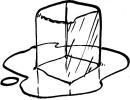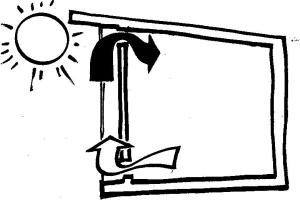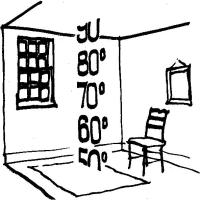|
A solar air heater or a solar space cooling system can save huge amounts of energy
|
Cooling
 It is really odd to use something extremely hot as sun is, to cool a place. Fortunately, it happens, and it also reduces electricity costs in a remarkable way.
It is really odd to use something extremely hot as sun is, to cool a place. Fortunately, it happens, and it also reduces electricity costs in a remarkable way.
- Passive cooling
- Prevent heat transfer Shading, proper window positioning and proper roof design are significantly effective.
- Remove heat from the building For hot humid climates TACS are mostly used, whereas cooling towers & solar chimneys and ventilation techniques are prefered in mild climates.
- Active Cooling - Thermally Activated Cooling Systems (TACS) These systems use the sun to provide 30% to 60% of a building's cooling requirements. Usually, they are supported by an alternative fuel source such as natural gas.
- Absorption coolers
- Desiccant coolers
It is achieved in two steps:
TACS are divided in tow categories:
Read more on the impact of water on the environment at water-kingdom.com
Ventilation
 Passive solar ventilation concept is very simple. It just works as a greenhouse does. It uses the ability of hot air to go up, to insert or remove air from the building.
Passive solar ventilation concept is very simple. It just works as a greenhouse does. It uses the ability of hot air to go up, to insert or remove air from the building. Using a solar chimney, a solar wall or a solar room we create air updraft to produce ventilation.
In winter, hot air is driven into the house to heat it.
In the summer, ventilation can be used to cool a room.
P.S. Solar thermal power is one of the most effective forms of solar energy because we can use it as it is. Why should we invest on passive solar heating, cooling and ventilation? Because using sun's renewable energy, they offset zero carbon dioxide helping to save the environment. Solar heating, cooling and ventilation are the mostly used technologies for residential solar energy use.
| Home | Sitemap | Contact Us |






